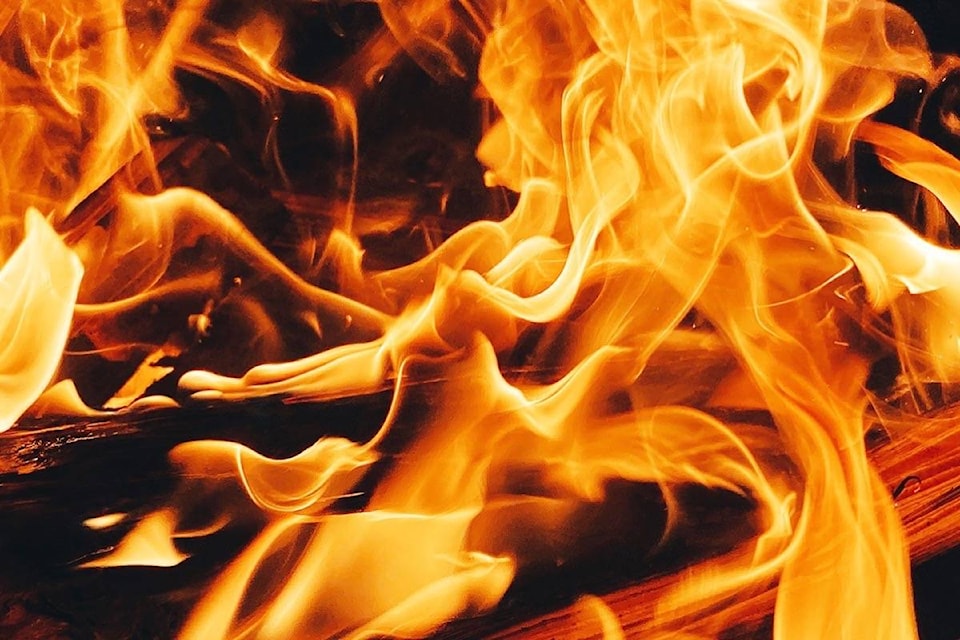There have been 209 fires in the Southeast Fire Centre to date this season, with 69 fires active at press time on Wednesday.
The BC Wildfire Service says it is aware of these fires and is prioritizing and responding to them accordingly.
Response officers have assessed and classified some of these blazes as modified response or “monitor fires” based on a mix of factors including but not limited to, challenges to crew safety, distance from communities, and inoperable terrain.
Once a fire has been classified as modified response, a fire analysis is developed.
This analysis identifies trigger points that will prompt officers to reassess the fire and put a predetermined suppression plan in place.
Modified response fires are monitored daily either by remote camera or fly-overs by experienced officers.
Arrow Zone
Mount Ruppel fire is located about 14 kilometres (km) east of Slocan. This fire is producing smoke that may be visible from Slocan, Winlaw, Nelson and surrounding areas, as well as motorists traveling on Highway 6. It is estimated to be 130 hectares in size and is not currently threatening structures.
The Kimbol fire is located about 10 km east of Nakusp. This fire is producing smoke that may be visible from Nakusp and surrounding areas, as well as to motorists traveling on Highway 6 and Highway 23. It’s estimated to be 47 hectares in size and is not currently threatening structures.
The Octopus Creek fire is located about 34 km west of Passmore. This fire is producing smoke that may be visible from Passmore and surrounding areas, as well as to motorists traveling on Highway 6. It is estimated to be 25 hectares in size and is not currently threatening structures.
Boundary Zone
The Gladstone Park fire is about 34 km north of the community of Christina Lake in Gladstone Park. The fire is producing smoke that is visible from Christina Lake and surrounding areas. It is estimated to be 14 hectares in size and is not currently threatening structures.
Kootenay Lake Zone
Cultus Creek fire is located about 35 km northwest of Creston. This fire is producing smoke that may be visible Nelson, Creston and surrounding areas, as well as to motorists traveling on Highway 3A and Highway 6. It is estimated to be 460 hectares in size and is not currently threatening structures.
The Akokli Creek fire is located about 7.5 km east of Boswell. This fire is producing smoke that may be visible to Boswell, surrounding areas, and those travelling on Highway 3A. It is estimated to be 95 hectares in size and is not currently threatening structures.
Cranbrook Zone
Redding Creek fire (N11795) is about 14 km northeast of the community of Boswell. This fire is producing smoke that may be visible to Boswell, surrounding areas, and those travelling on Highway 3A. It is estimated to be 100 hectares in size and is not currently threatening structures.
Columbia Zone
Carrol Creek fire (N41221) is located about 50 km north of Golden. This fire is producing smoke that is highly visible to motorists traveling on Highway 1 north of Golden. It is currently estimated to be 98 hectares in size and is not currently threatening structures.
Blackwater Ridge fire (N41804) is located about 35 km north of Golden. This fire is producing smoke that is highly visible to motorists traveling on Highway 1 north of Golden. It is currently estimated to be 40 hectares in size and is not currently threatening structures.
The Kamma Creek (N71743) fire is located approximately 32 km northeast of Creston and is burning in high terrain in the Goat Creek drainage. This fire is producing smoke that may be visible to those travelling on Highway 95. It is estimated to be 140 hectares in size and is not currently threatening structures.
BC Wildfire Service says that fire is a natural, normal process in many ecosystems and is necessary to maintain a healthy forest as well as the diversity of plant and animal life. Many plants and animals have not only adapted to fire but actually depend on it, like the lodgepole pine which needs fire to help disperse its seeds.
Naturally occurring fires also help to keep insects and disease under control by killing the pathogens infecting a stand. This is critical given that in recent years more than five times as much timber in B.C. has been lost to insects and disease than has been consumed by wildfire.
Read more: Trail wildfire was-human caused
Read more: Containment lines laid around perimeter of Bombi Summit fire
newsroom@trailtimes.ca
Like us on Facebook and follow us on Twitter
